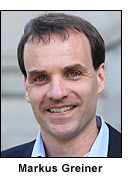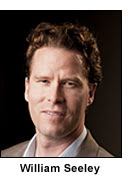
Genius Award Winners Announced
CHICAGO, Sept. 28, 2011 — The John D. and Catherine T. MacArthur Foundation recently announced 22 new MacArthur fellows for 2011. Included are a condensed matter physicist and a neuropathologist. All fellows are selected for creativity, originality and potential to make important contributions in the future.
The recipients learned, through a phone call out of the blue from the foundation, that they will each receive $500,000 in no-strings-attached support over the next five years. MacArthur fellowships come without stipulations or reporting requirements and offer fellows unprecedented freedom and opportunity to reflect, create and explore.
“This has been a year of great change and extraordinary challenge, and we are once again reminded of the potential individuals have to make a difference in the world and shape our future,” said Robert Gallucci, president of the foundation. “The MacArthur fellows exemplify how individual creativity and talent can spark new insights and ideas in every imaginable field of human endeavor.”

 Markus Greiner, a condensed matter physicist at Harvard University, was recognized for his work in developing an apparatus to trap thousands of ultracold atoms in well-ordered two-dimensional arrays to study quantum phenomena such as superconductivity under well-controlled conditions.
Markus Greiner, a condensed matter physicist at Harvard University, was recognized for his work in developing an apparatus to trap thousands of ultracold atoms in well-ordered two-dimensional arrays to study quantum phenomena such as superconductivity under well-controlled conditions.
The foundation also recognized William Seeley, an associate professor of neurology at the Memory & Aging Center at the University of California, San Francisco, for his contributions to neurology. He integrates microscopy, magnetic resonance imaging (MRI) and clinical examination to explore the structural, functional and behavioral aspects of human neurodegenerative disease, concentrating on frontotemporal dementia. Using functional MRI, he demonstrated changes in brain activity of afflicted individuals in regions that correlate with loss of von Economo neurons. His observations could help identify the molecular and cellular mechanisms underlying the initiation and spread of the disease and help lay the groundwork for developing treatments to halt its progression.
Other winners include Jad Abumrad, a radio producer; Kevin Guskiewicz, a sports medicine researcher; Shwetak Patel, a technologist; Matthew Nock, a clinical psychologist; Jeanne Gang, an architect; Elodie Ghedin, a parasitologist/virologist; Petter Hessler, a long-form journalist; Dafnis Prieto, a percussionist and composer; Sarah Otto, an evolutionary geneticist; Tiya Miles, a public historian; and A.E. Stallings, a poet and translator.
“The call from the foundation is the culmination of an intensive year or longer review of the creative efforts and promise of each fellow,” said Daniel J. Socolow, director of the MacArthur Fellows Program.
The selection process begins with formal nominations. Hundreds of anonymous nominations assist the foundation in identifying people to be considered for a fellowship. Nominations are accepted from invited nominators only, a list that is constantly renewed throughout the year. The nominators are chosen from many fields and challenged to identify people who demonstrate exceptional creativity and promise. A selection committee of about a dozen members, who also serve anonymously, meets regularly to review files, narrow the list and make final recommendations to the board of directors. The number of fellows selected each year is not fixed, varying between 20 and 25.
Including this year’s fellows, 850 people, ranging in age from 18 to 82 at the time of their selection, have been named MacArthur fellows since the inaugural class in 1981.
The foundation’s aim is to support creative people and effective institutions committed to building a more just, verdant and peaceful world. It also works to defend human rights, advance global conservation and security, make cities better places, and understand how technology is affecting children and society.
For more information, visit: www.macfound.org
Published: September 2011